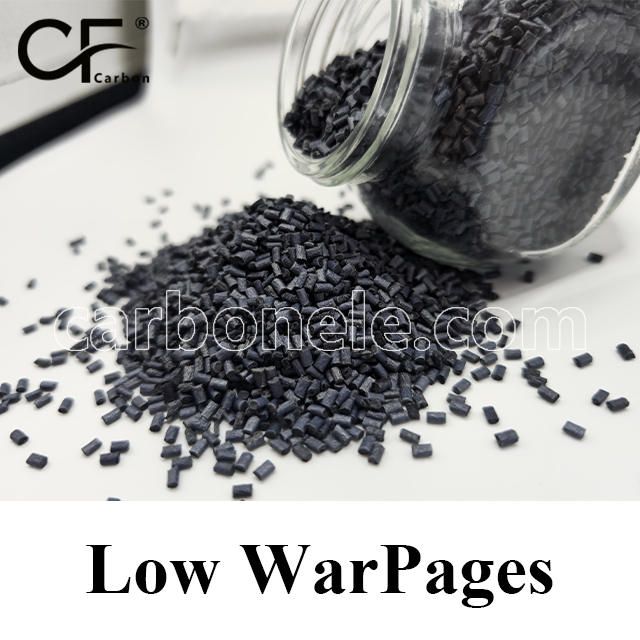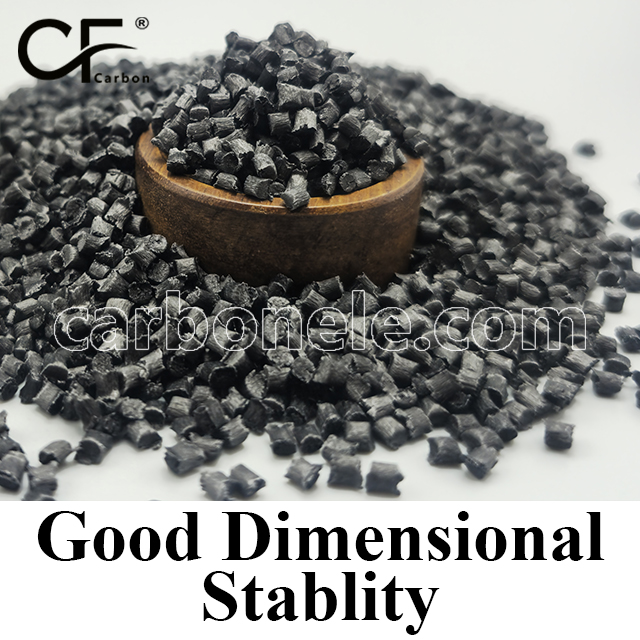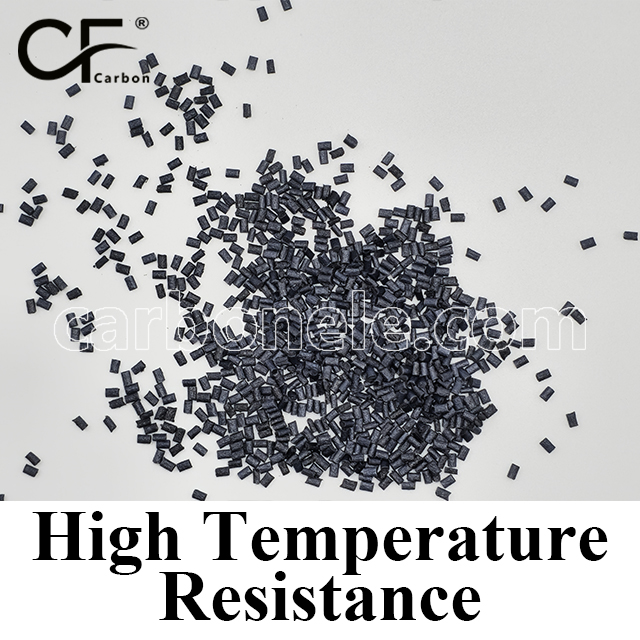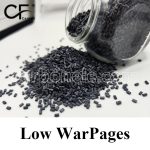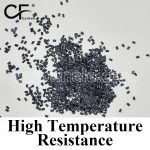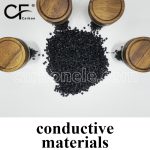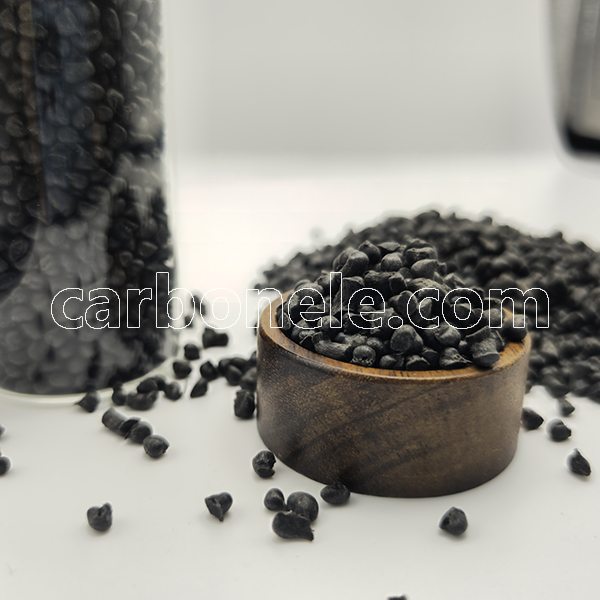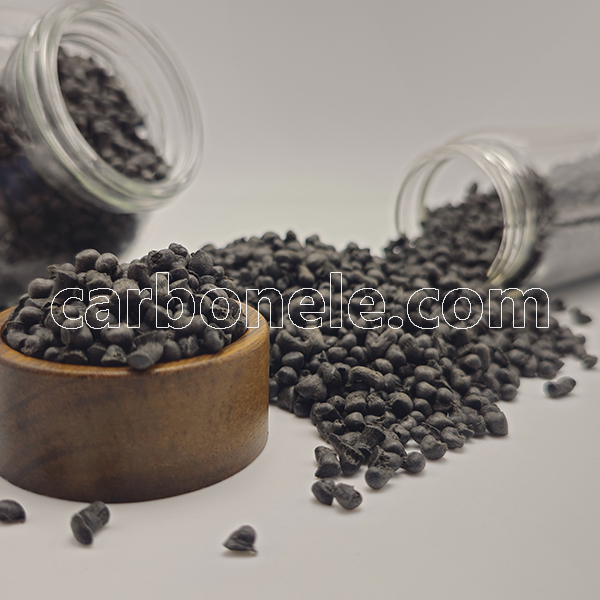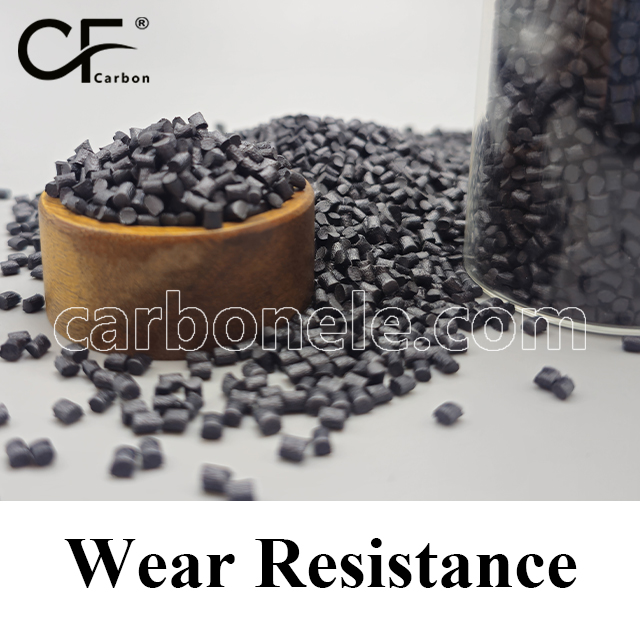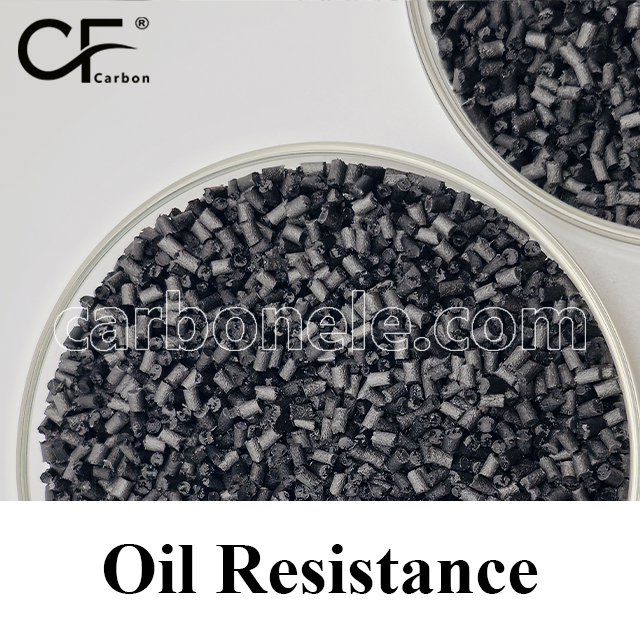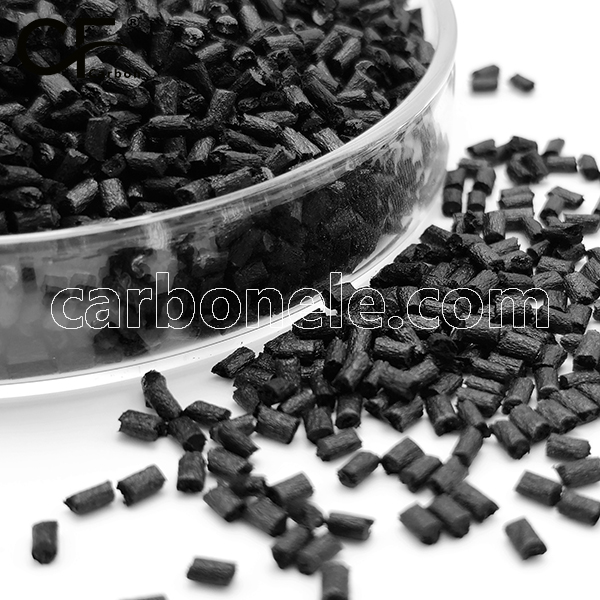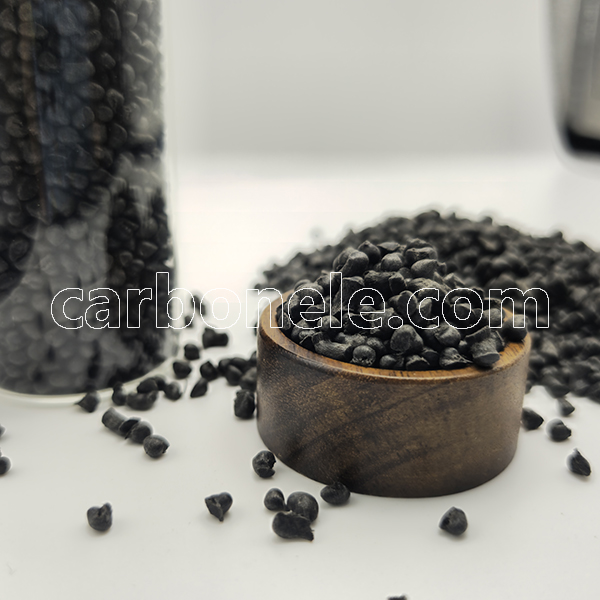PA612-CF10 is a high performance material with 10% carbon fiber reinforcement, offering excellent mechanical strength, stiffness, wear resistance, and thermal stability. It has a tensile strength of ≥110 MPa and flexural strength of ≥160 MPa, making it suitable for medium to high load applications. It performs well in high temperature and chemical environments, with low water absorption and excellent dimensional stability. PA612-CF10 is ideal for use in automotive, industrial manufacturing, electronics, and consumer goods.

High-performance PA612-CF10 material
- Model number: PA612-CF-BCA1
- Matrix Resin: Polyhexamethylene dodecanamide (PA612)
- Reinforcing Filler: Carbon fiber
- Appearance: Granules
- Grade: Injection/extrusion grade
- Packaging: 25kgs/bag
Mechanical Properties
PA612-CF10 is engineered to offer superior mechanical performance with 10% carbon fiber reinforcement. This higher fiber content significantly enhances the material’s stiffness, strength, and wear resistance compared to unreinforced PA612, while still maintaining good impact strength. It is ideal for applications requiring higher mechanical loads and stress resistance.
Tensile Strength: ≥ 110 MPa
Flexural Strength: ≥ 160 MPa
Impact Strength: ≥ 4.5 kJ/m²
With 10% carbon fiber content, PA612-CF10 delivers enhanced strength, durability, and impact resistance, making it suitable for medium to high duty performance applications.
Thermal and Chemical Resistance
PA612-CF10 retains the excellent thermal and chemical stability of pure PA612, with further improvements due to the added carbon fiber. It is capable of performing reliably in moderately high temperature environments and under exposure to chemicals.
Heat Deflection Temperature (HDT): Approx. 170°C
Long-Term Service Temperature: Up to 170°C
Chemical Resistance: Very good resistance to oils, fuels, solvents, and many common chemicals.
PA612-CF10 excels in industrial, automotive, and consumer applications where higher thermal and chemical resistance is required.
Wear Resistance and Processing
PA612-CF10 provides excellent wear resistance, particularly in high friction environments. The 10% carbon fiber content enhances the material’s durability, while it remains processable with standard thermoplastic techniques.
Wear Resistance: Significantly improved in high friction conditions compared to unreinforced PA612.
Processing Methods: Injection molding, extrusion (reinforced tooling recommended).
Its outstanding wear resistance and high mechanical strength make PA612-CF10 an ideal choice for industrial applications under higher stress and wear conditions.
Environmental Adaptability
PA612-CF10 offers low moisture absorption and excellent dimensional stability, ensuring consistent performance in environments with fluctuating temperatures and humidity. The carbon fiber content improves environmental stability compared to unreinforced PA612.
Water Absorption: Low
Dimensional Stability: Excellent, with minimal expansion or contraction under environmental changes.
PA612-CF10 ensures reliable performance in both indoor and outdoor conditions, making it suitable for a variety of moderate to harsh environmental applications.
Applications
PA612-CF10 is ideal for medium to high duty applications requiring a higher balance of mechanical strength, wear resistance, and thermal stability:
Automotive: Stress bearing structural components, brackets, and housings in moderate to high load environments.
Industrial Manufacturing: Durable parts such as heavy duty enclosures, fixtures, and support brackets in environments with high wear conditions.
Electronics: Protective housings and covers for devices requiring high impact resistance and thermal stability.
Consumer Goods: High performance power tool casings, appliance components, and sports equipment.
Summary Table for PA612-CF10
| Characteristic | Value/Description |
|---|---|
| Carbon Fiber Content | 10% |
| Tensile Strength | ≥ 110 MPa |
| Flexural Strength | ≥ 160 MPa |
| Impact Strength | ≥ 4.5 kJ/m² |
| Heat Deflection Temperature | Approx. 170°C |
| Long-Term Service Temperature | Up to 170°C |
| Chemical Resistance | Very good |
| Water Absorption | Low |
| Processing Methods | Injection molding, extrusion (reinforced tooling recommended) |
| Wear Resistance | Excellent in high friction conditions |
If you want to get more information about PA612-CF10, you can visit our Youtube.
Strength between PA612 and PA612-CF
PA612 is a strong, chemically resistant nylon with good wear properties, but its mechanical strength is moderate. PA612-CF is the carbon fiber reinforced version, offering significantly higher tensile and flexural strength, improved stiffness, and better wear resistance, making it ideal for high-performance applications.
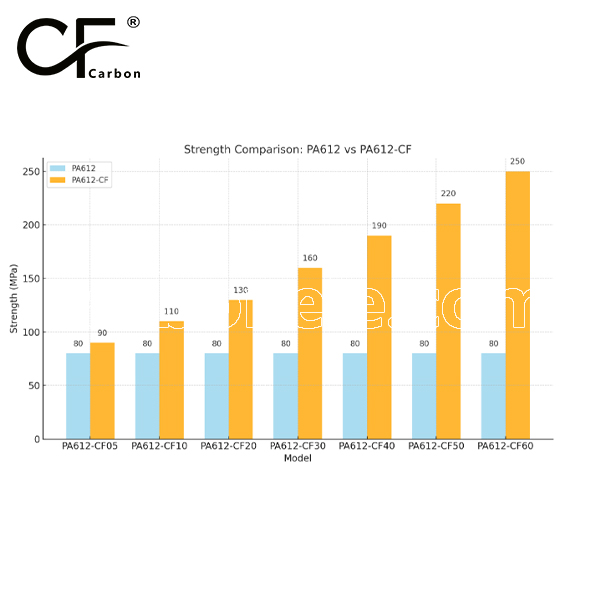


Frequently Asked Questions
Carbon (Xiamen) New Material Co., Ltd. aims to provide buyers with "one-stop" worry-free high-quality services. Here you can find all information about carbon fiber engineering plastics. If you still have questions, please send us an email for consultation!
-
How can I contact the manufacturer of a product that interests me?
When you find a product you are interested in, you can contact the manufacturer directly by sending an email and we will get back to you as soon as possible.
-
How do I find the products that interest me?
All you need to do is enter the keyword, product name in the search window and press the Enter key on your keyboard. Your search results page will then be displayed. You can also search within the product category pages on the home page. Each category is divided into subcategories, allowing you to refine your search and find products that interest you.
-
Where will I find a buying guide?
Please contact our after-sales service directly and we will provide you with a comprehensive operating guide.
-
What are CF Reinforced Thermoplastic Composites?
CF Reinforced Thermoplastic Composites are materials where carbon fibers are incorporated into a thermoplastic matrix. They combine the strength and stiffness of carbon fibers with the processability and recyclability of thermoplastics. For instance, they are used in automotive parts like bumper beams.
-
What are the benefits of CF Reinforced Thermoplastic Composites over traditional composites?
The key benefits include faster production cycles, easier recyclability, and better impact resistance. They also offer design flexibility. An example is in the manufacturing of consumer electronics casings where complex shapes can be achieved more easily.
-
How are CF Reinforced Thermoplastic Composites processed?
Common processing methods include injection molding, extrusion, and compression molding. Injection molding is widely used for mass production. For example, in the production of small components for the medical industry.
-
What industries use CF Reinforced Thermoplastic Composites?
They are utilized in aerospace, automotive, medical, and sports equipment industries. In aerospace, they can be found in interior components. In the medical field, they might be used in prosthetics.
-
How does the carbon fiber content affect the properties of the composites?
Higher carbon fiber content generally leads to increased strength and stiffness but may reduce ductility. A moderate content is often balanced for specific applications. For example, a higher content might be preferred in structural parts of a race car.
-
What are the challenges in using CF Reinforced Thermoplastic Composites?
Challenges include higher material costs, complex processing equipment requirements, and ensuring uniform fiber dispersion. Issues with adhesion between the fibers and the matrix can also arise. An example is in achieving consistent quality in large-scale production.







